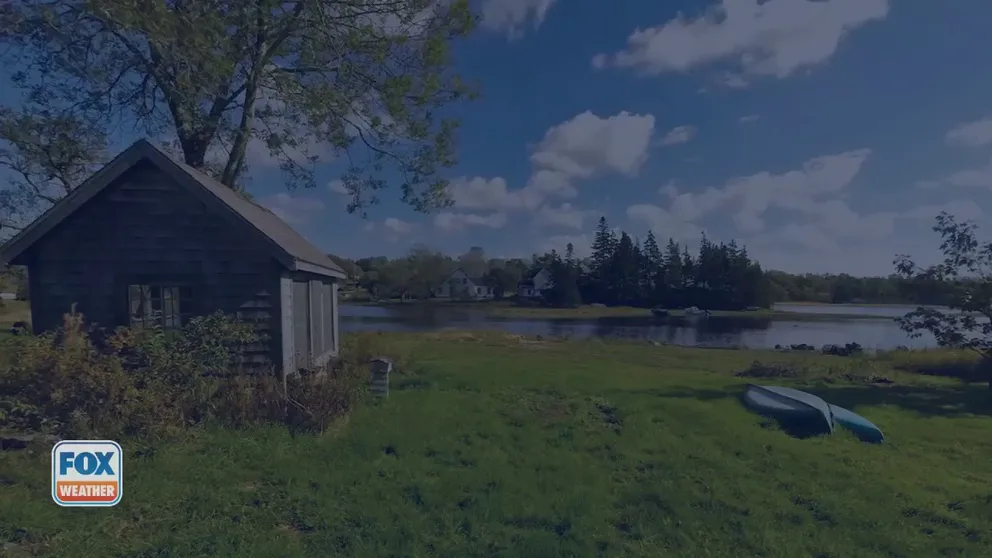10 largest US lakes worth visiting during your next vacation
Many of the larger lakes are monitored for quality and pollution by the U.S. Environmental Protection Agency. Some of the waterways are used for drinking resources, in addition to recreation.
Best lakes to visit in the US
Check out the top 10 largest lakes across the country worth stopping at during a vacation
The U.S. is home to millions of lakes, and for communities that are far away from oceans, these waterways provide both recreational and commercial activities year-round.
Alaska has the largest number of freshwater lakes in the country, with Minnesota, Wisconsin, Michigan, New York and Maine following.
Minerals give some lakes a salinity that is greater than the sea, while others are full of pure, fresh water.
Water covers about 71% of the Earth’s surface, but the U.S. Bureau of Reclamation estimates that only about 3% is fresh.
Many lakes are known for their recreational activities, while others are a source of natural beauty with plenty of animals that call the ecosystem home.
Here are the largest lakes worth a visit in the U.S.
NOT A DROP TO DRINK: RAINWATER POLLUTED BY CHEMICALS WORLDWIDE, STUDY SAYS
Lake Michigan in Illinois
The only Great Lake that is entirely in the U.S. is Lake Michigan. The lake is the third largest of the Great Lakes, and is the fifth-largest lake in the world.
Major cities such as Milwaukee and Green Bay in Wisconsin and Chicago in Illinois border the lake, which is a popular destination for recreational activities such as fishing, boating and swimming.
More than 12 million people are estimated to live in the vicinity of the lake.
Due to its southern location compared to the other Great Lakes, it does not completely freeze over during the winter, but ice is usually seen on the lake from December through early March.
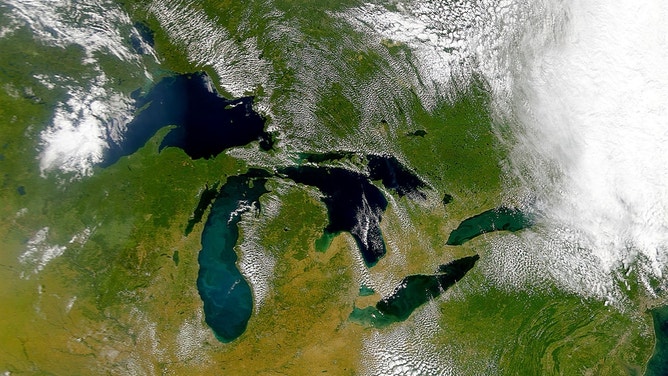
Satellite picture of the Great Lakes including Lake Michigan
(NOAA)
The lake does not have the cleanest quality among the world’s lakes. According to a study by the Rochester Institute of Technology, 11 million pounds of plastic are dumped into Lake Michigan annually.
Despite the pollution concerns, the lake is home to several beaches that have won awards and accolades for their cleanliness.
Sleeping Bear Dunes in Michigan was declared one of the top beaches in the world, according to National Geographic.
Water temperatures usually remain chilly for most of the year, with mid-30s usually reported during the winter and highs of about 70 degrees making a brief appearance during the summer.
REPORT HIGHLIGHTS THE 10 MOST ENDANGERED RIVERS IN AMERICA
Lake Tahoe in California
The largest freshwater lake in the Sierra Nevada mountain range is Lake Tahoe, which straddles the border between California and Nevada.
The lake is known for its clarity and picturesque scenery and is a popular destination for skiing, hiking and water sports.
Its elevation of more than 6,200 feet above sea level ensures that the region sees both summer warmth and winter cold.
The lake’s depth of 1,645 feet is thought to prevent the waterway from completely freezing over, though occasional ice pockets are spotted in the shallower regions.
According to the U.S. Environmental Protection Agency, the lake is recognized nationally and globally as a resource of special significance and has been designated "Outstanding National Resource Water" under the Clean Water Act.
According to the agency, 3 million people visit Lake Tahoe annually.
HARMFUL ALGAL BLOOM EXPECTED ALONG GREAT LAKES THIS SUMMER
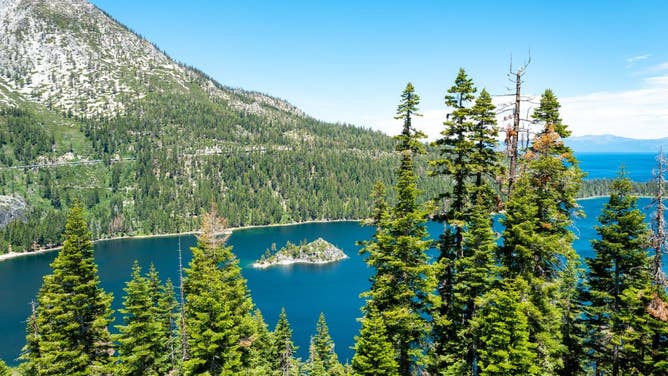
Aerial view of Lake Tahoe and Emerald Bay, South Lake Tahoe, California, June 17, 2022.
(Photo by Gado/Getty Images / Getty Images)
Great Salt Lake in Utah
The largest saltwater lake in the Western Hemisphere covers 1,700 square miles in northern Utah.
According to Utah’s tourism office, the Great Salt Lake is an easy drive from Salt Lake City.
There is plenty of sailing, paddleboarding, boating and nature watching around the lake.
Locals say if fishing is your sport, you may want to stay clear of the lake. Its high salt levels do not support fish.
According to geologists, the lake is between 3.5 and 8 times saltier than the ocean.
Due to the waterway’s shallow terrain, the water temperature can jump from below freezing during the winter to warmer than 80 degrees during the summer.
THERE ARE MIXED SIGNALS FOR UTAH’S WATER FUTURE AFTER HISTORIC SNOWFALL
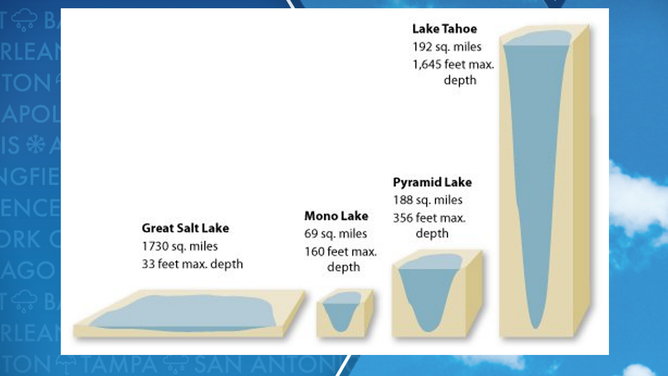
Lake Tahoe vs Great Salt Lake depth
(University of Utah / FOX Weather)
Lake of the Ozarks in Missouri
The Lake of the Ozarks is actually one of the largest man-made reservoirs in the U.S.
The waterway was completed in 1931 and has more than 1,100 miles of shoreline, which rivals the state of California.
According to the Lake of the Ozarks Convention and Visitors Bureau, 5 million people visit the site annually for its water sports, fishing, resorts, restaurants and other tourist attractions.
The Ozarks region experiences all four seasons, with snow and ice during the winter and thunderstorms during the late spring and summer.
There are estimated to be 70,000 docks on the lake, which has an average water temperature of nearly 60 degrees.
Entomologists consider the region to be a biodiversity hotspot for plants, bugs and other organisms and is relatively understudied.
GIANT BUG FOUND AT AN ARKANSAS WALMART IDENTIFIES AS A JURASSIC-ERA INSECT
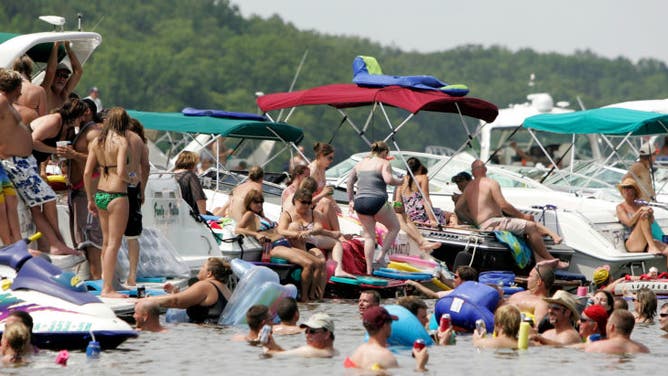
Officially called Anderson Hollow Cove, this small part of the Lake of the Ozarks in Missouri is better known as Party Cove, Saturday, June 23, 2007.
( Chris Oberholtz/Kansas City Star/Tribune News Service via Getty Images / Getty Images)
Lake George in New York
One of the largest freshwater lakes in the Adirondack Mountains of New York is Lake George.
The lake covers 28,000 acres and is a popular destination for boating, fishing and swimming.
According to the Lake George Association, the waterway is one of the clearest and cleanest in the world. More than 90% of the watershed remains untouched and is part of a preserve.
Million Dollar Beach is known for its picnic and boating, while nearby Prospect Mountain offers views of the lake and Adirondacks.
It is estimated the lake and associated businesses generate $3 billion in annual economic activity.
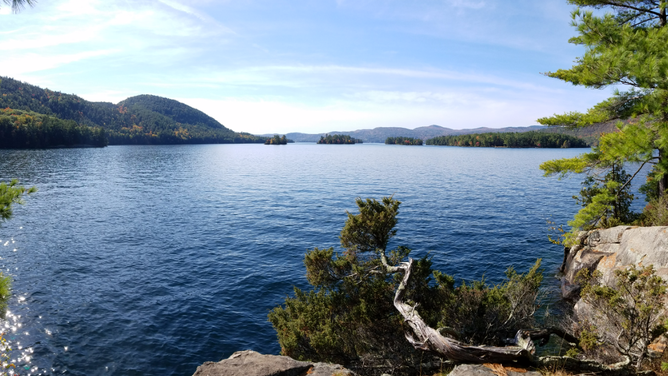
Lake George, New York
(State of New York / FOX Weather)
Lake Norman in North Carolina
A large lake located just outside of Charlotte covers more than 32,000 acres and is home to neighborhoods, parks and other attractions.
Lake Norman was built during the 1960s as part of a dam-feeding project for power generation.
Dozens of miles of trails and parks surround the waterway, which provide access to recreational facilities.
Due to development in the Tar Heel State, there are only two designated swimming beaches - Ramsey Creek and Lake Norman State Park.
The local visitor's bureau says the best time to visit the lake is during the summer between Memorial Day and Labor Day.
August is typically the wettest month in the region, with plenty of opportunities for pop-up showers and thunderstorms.
NORTH CAROLINA TURKEYS RECEIVE PRESIDENTIAL PARDON UNDER SUNNY SKIES
Lake Okeechobee in Florida
The largest freshwater lake in the state of Florida is Lake Okeechobee, and is part of the Everglades watershed.
The waterway covers an area of 730 square miles and only reaches a maximum depth of about 12 feet.
The shallow depth and the warm Florida air allows its average water temperature to rise to nearly 90 degrees during the summer.
In addition to being an important resource of drinking water for nearby communities, the lake is also a popular destination for fishing, boating and other recreational activities.
The lake sits in the heart of what is considered Florida’s thunderstorm country, where showers and thunderstorms erupt every summer.
The combination of warm air temperatures, moisture and sea breezes are the main ingredients that align for showers and thunderstorms to pop during the afternoons.
The rainy season in South Florida typically begins in May and runs through September.
SEE THE MASSIVE ALLIGATOR FOUND LURKING IN A SOUTH FLORIDA SWAMP
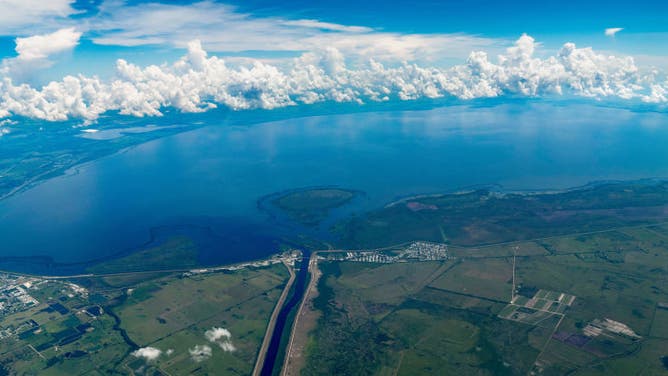
Aerial view of Lake Okeechobee, Florida.
(Marli Miller/UCG/Universal Images Group via Getty Images / Getty Images)
Lake Pontchartrain in Louisiana
The Big Easy sits on the shore of Lake Pontchartrain, which is a sizable brackish waterway in southeast Louisiana.
Locals consider the lake to be an essential ecosystem for fish, crabs and other marine life.
In addition to fishing, boating and other recreational activities are popular year-round on the lake.
According to the Pontchartrain Conservancy, the best access for swimming is on the north shore at Fontainebleau State Park.
EXPERT BELIEVES SECONDARY SINKHOLE IS LIKELY TO BLAME FOR GROWING ALARM IN TEXAS TOWN

FILE - A aerial view of Lake Pontchartrain Causeway.
( Jeffrey Greenberg/Universal Images Group / Getty Images)
Lake Champlain in Vermont
This freshwater lake makes up part of the border between New York and Vermont, and its shoreline runs for more than 500 miles.
Lake Champlain’s terrain is complex and is made of everything from wetlands to rocky bluffs.
The waterway is a popular destination for fishing, boating and water sports, especially during the late summer.
During warmer years, water temperatures can approach 70 degrees, but outside the usually sunny season, the lake can freeze during the heart of the winter.
The clean waterway is home to more than 300 species of birds and over 90 types of fish.
Locals consider the more than 300,000-acre lake the best bass fishing site in North America.
SCOTTSDALE, ARIZONA, CUTS OFF WATER TO SUBURB IN RESPONSE TO COLORADO RIVER DROUGHT
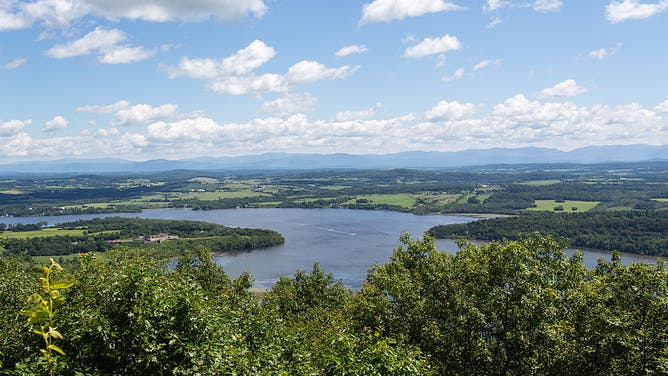
TICONDEROGA, NEW YORK - AUGUST 2: A view from Mount Defiance overlooks Fort Ticonderoga, center left, August 2, 2013 of Lake Champlain separating New York with Vermont (center right). The large 18th-century fort was built and completed by the French in 1757 at the southern end of Lake Champlain during the French and Indian War. The fort was of strategic importance during the 18th-century colonial conflicts between Great Britain and France in the settling of North America and played a role during the American Revolutionary War. The fort is situated between Lake Champlain and Lake George.
(Photo by Robert Nickelsberg/Getty Images / Getty Images)
Lake Powell in Arizona
The large man-made reservoir was created by the flooding of Glen Canyon in the 1960s and currently has more coastline than the states that make the West Coast.
Lake Powell is part of the Colorado River basin and stretches across Arizona and Utah.
According to the National Park Service, more than 2 million people visit the site annually, and it provides opportunities for hiking, camping, swimming, boating and fishing.
The NPS reports June is typically the driest month, with the later parts of the monsoon season helping increase the chances of rain in September and October.
The humidity is usually rather low, which aids the typically comfortable weather.
Due to the lack of cloud cover, water temperatures can surpass 80 degrees during the summer.
A prolonged drought and increasing withdrawals caused water levels in the reservoir to dip to historic lows in 2022, limiting boating and other recreational activities.
Due to a significant western snowpack and increased runoff, the U.S. Bureau of Reclamation estimated that water levels will return to above average this year.
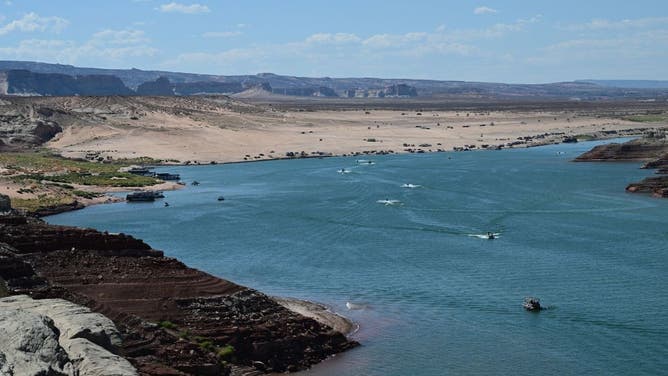
Exposed beaches are seen as people enjoy the water of the Colorado River in Lake Powell, despite lower than normal water levels, in Wahweap Bay in Page, Arizona, on September 3, 2022. - More than two decades of severe drought have left the Colorado River and its second largest reservoir, Lake Powell, at critical levels, as climate change leads to increased heat and decreased precipitation. In August the US government announced water supplies to some US states and Mexico will be cut to avoid a "catastrophic collapse" of the Colorado River. As of September 3, 2022, Lake Powell's water elevation was down to 3,531 feet, inching closer to dead pool status of 3,370 feet, the point at which the lakes water levels would be so low they would no longer flow downstream to power the hydroelectric power stations.
(ROBYN BECK/AFP via Getty Images / Getty Images)
